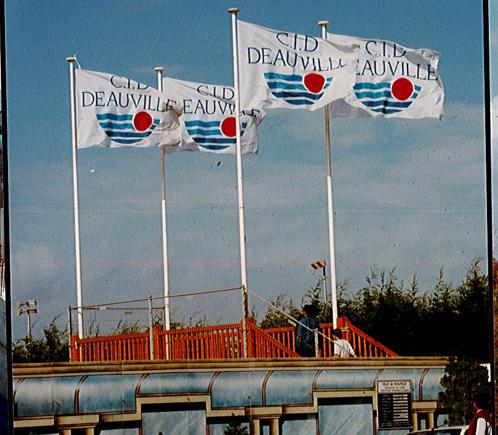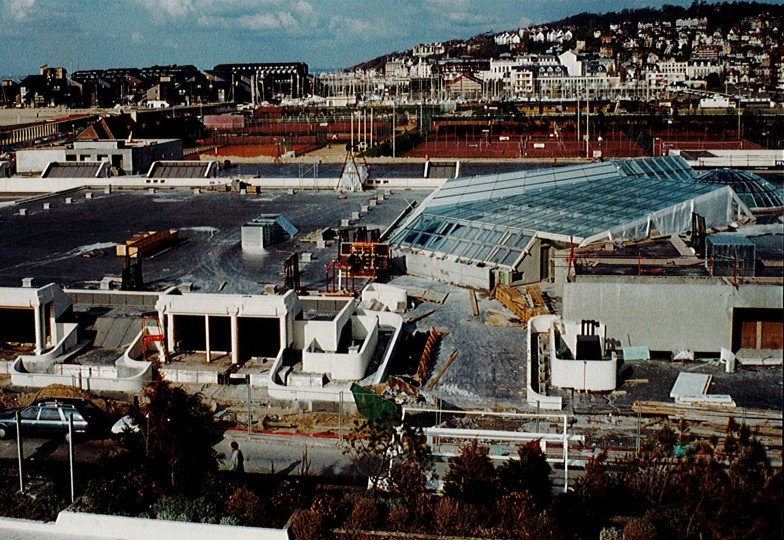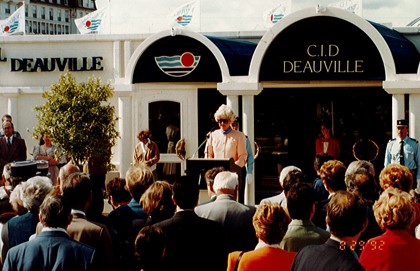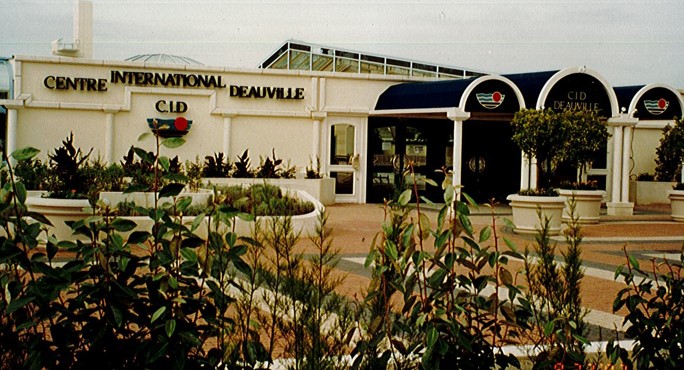The history of the Centre International de Deauville

Deauville was born in 1858 around the church of Saint Laurent, it had only a hundred inhabitants, all located on the hill of Mont Canisy. After a stay in Trouville-sur-mer, the Duke of Morny, half-brother of Napoleon III, fell under the spell of the marshes and the beach located after this small village on the Côte Fleurie and decided to acquire it in order to develop an ideal seaside resort. He surrounded himself with an architect and a financier in order to make the future Deauville resort elitist and built a casino, a racetrack, a commercial port and a railway line in order to facilitate access and develop activities within the town. Deauville was built in only 4 years and the architecture of the seaside resort took shape. From the 1910s on, the most prestigious places in Deauville were created and designed by Eugène Cornuché: the Hotel Le Normandy, Le Royal and the Hotel du Golf. As the years went by, the equestrian scene became more and more popular, as did the golf course and events such as the American Film Festival, which became more democratic: this was one of the first steps towards extending the resort’s off-season activity.
From 1965 to 1970, Deauville was one of the top 5 conference and seminar destinations in France. The city welcomed between 1,000 and 3,000 conventioneers and adapted to the demand by installing tents on Eugène Cornuché Boulevard or in the parking lot of the Deauville La Touques racetrack. The town’s vocation became more and more important and it hosted major trade shows such as TOP RESA in 1978 and TOP COM in 1984.
In 1987, the very attractive Destination Deauville received 35,305 conventioneers but refused to host 14 conventions due to a lack of space; the city could not accommodate all the conventioneers.
Thus, the need for a reception area for seminars and conventions quickly became apparent. Anne d’Ornano, the city’s mayor, wanted to further develop business tourism and supported the project for a convention center. At the time, this was an ambitious project for a seaside resort of 3,000 inhabitants.
On December 30, 1988, a jury composed of Deauvillais, professionals and the city council chose the architect Patrick Le Goslès, a native of the region, and the companies Quillery and Rufa, among others, for the realization and construction of the CITC: Centre International Touristique et Culturel. The initial project foresees a hall of 850 places and an underground parking of 1200 places under the tennis courts.
After a study trip to the United States and under the advice of the Americans, the plan of the C.I.D. was modified: the enlargement of hall 3 under the avenue Lucien Barrière was decided and the auditorium went from 850 to nearly 1500 seats.
The building permit was granted and the Deauville Convention Center was to be semi-buried and not exceed 3.50m above ground. The groundbreaking ceremony took place on January 2, 1991 in the former Casino gardens. More than 150,000 m³ of sand and gravel were removed.
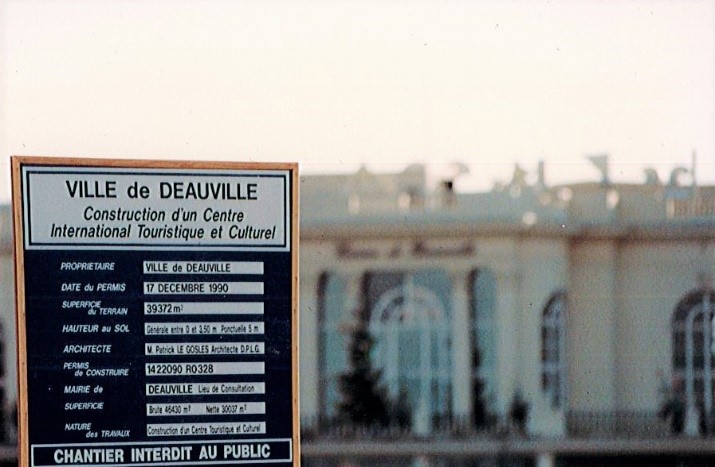
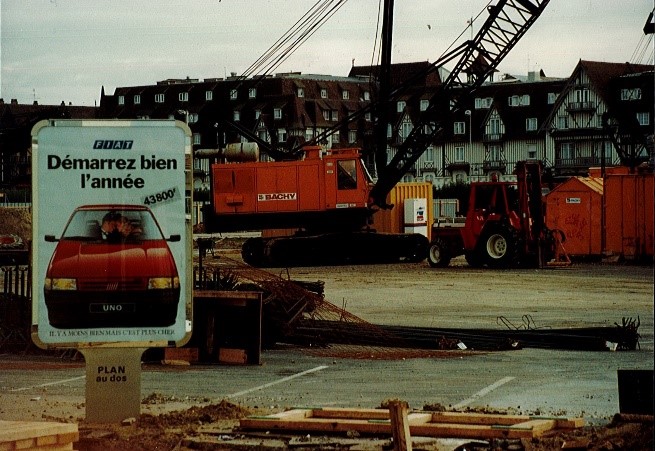
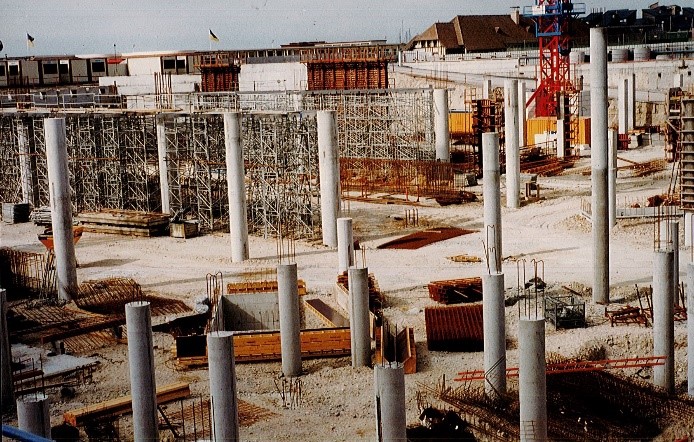
In February 1991, the foundation piles of the establishment were laid and the two main beams were installed.
During the construction, a promontory was installed to allow the public to follow the progress of the work and a frieze was specially created by Michel Deschamps covering the whole of the C.I.D.‘s surroundings; this visual corresponds to a simulation of the sketches, revealing the future silhouette of the Palais des congrès.
The Michel d’Ornano auditorium was delivered in December 1991, followed by the creation of a “Casino gallery” tunnel under the Boulevard Cornuché linking the Deauville Casino and the Centre International de Deauville.
In March 1992, the decorating companies moved into the convention center and created the identity and prestigious, upscale atmosphere of the CID, using the colors chosen to represent the Deauville destination: blue/gray, green and beige.
With the scale of the project arousing curiosity, tours open to the public and guided by Hubert Moisy and Patrick Le Goslès, the project architect, began in the spring of 1992.
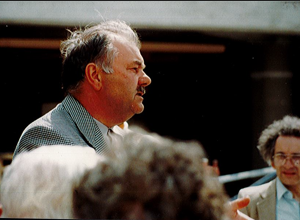
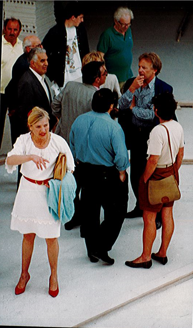
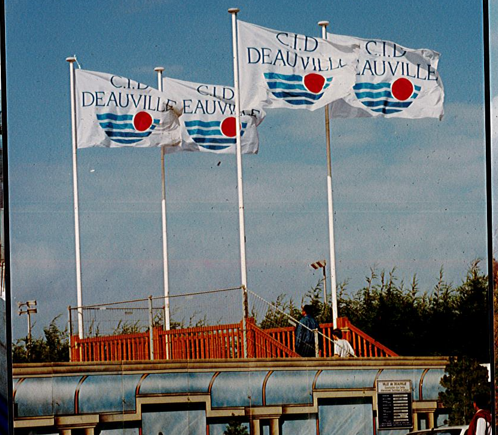
In total, more than 250 million francs (nearly 55 million euros), 350,000 hours of work and nearly 400 men were needed to build the CID.
Avenue Lucien Barrière was inaugurated on August 29, 1992 by Anne d’Ornano and Diane Barrière-Desseigne, and the Centre International de Deauville was inaugurated on September 4, 1992 by Clint Eastwood, who came to present his new film “Impitoyable” at the 18th Deauville American Film Festival.
Thanks to Yves Aublet for his testimony and for sharing his photos.
Photo credit: Yves Aublet
Discover 30 years of events at the C.I.D in video :



